Clouds and Moon on the 7,000-mile road-Alxa Heroes 'Gathering (Long and Careful Entry)
preface
Originally, it was planned to rush to travel off-peak before the National Day holiday and complete the trip to Jiangxi/Anhui in September, but it backfired and could not make it after many delays, so in the end, we had to shelve it. Later, when I learned that the annual Alxa Heroes 'Fair was held during the National Day Golden Week, I found a group team online and hurriedly signed up before sitting down and starting to plan this Long March journey that was completely unprepared.
Upon closer inspection, I realized that the entire journey traveled from south to north, with a round trip of nearly 7,000 kilometers. Although it was still "thousands of miles" away from the "Eight Thousand Miles of Cloud and Moon" full of red rivers, it was not enough to "break through the peak of Helan Mountain", but there were still many challenges in completing the entire journey. The first is adaptation to climate change. High temperatures of more than 30 degrees are still common in September and October in the south, but have quietly dropped below 10 degrees at night in the north. On the other hand, I learned from the registered brigade that during the Heroes 'Club, you need to set up your own tents in the desert camp, and the temperature at night in the desert can drop to around zero! But now that we have registered, we must overcome all difficulties and implement them. All the difficulties that come will also serve as a practical experience before next year's trip around China.
In order to avoid duplicating the route as much as possible, in addition to Yinchuan, we plan to take different cities to stay north and south respectively. The entire itinerary is roughly as follows:

In addition to sufficient warm clothing, it is even more rare to bring the SLR with me this time, hoping to have a leisurely time on the long road to relive the feeling of watching the viewer press the shutter.
Everything was ready, and the car loaded with luggage set off on September 16.
Enshi Grand Canyon
Since the four provinces of Guangxi/Guizhou/Hubei/Hunan had already visited Zhangjiajie and Shennongjia in the previous tour, the Enshi Grand Canyon was chosen as the first major attraction on the way north this time.
Friends who have been to Zhangjiajie will probably feel that the Enshi Grand Canyon is a bit like this. After all, they have experienced the vast sea and difficult water, and it is inevitable that the five mountains will return and sigh without looking at the mountains. But to be fair, for a single attraction, it is not useless. It is just limited to objective conditions and is a physical activity that requires a certain amount of physical strength, which naturally inevitably affects the mood of playing.
The scenic spot is mainly divided into two attractions: Yunlong Ground Crack and Qixing Village. Due to the need to save physical strength, we simply skipped Yunlong Ground Crack and took the cableway directly up the mountain to conduct a four-hour cardiopulmonary function test.
The transportation arrangements of the Qixingzhai Scenic Spot are really inhumane. After entering the gate of the scenic spot, you take a shuttle bus to the cableway station. After taking the cableway up the mountain, you start a long hike. The biggest problem is that there is no way to exit halfway. You have to go back to the cableway station and take the cableway down the mountain, or you have to go through the entire journey to the electric (fee-paying) escalator on the other side to go down the mountain, and then change to the shuttle bus to return to the gate of the scenic spot. Needless to say, this arrangement provides a good operating environment for the slide pole, and there are not a few people who "surrender" halfway and switch to the slide pole. Fortunately, we came prepared. In addition to traveling lightly, we had all kinds of hiking sticks and hiking shoes, so that we could cope with the urgent ascent and descent of the plank road stairs along the way. Of course, excellent weather is also an important key to completing the trip that day.
The first check-in point after the cableway goes up the mountain:

In fact, the mountain has a broad view and the scenery is not bad:

There are strange stones everywhere, just what they say they look like:

Of course, landscapes such as One-Line Sky are not unique here:

Isn't the scenery outside a bit similar to Zhangjiajie:


The main check-in point is indispensable: one incense stick:

I forget what this is called:

However, the escalator down the mountain is quite distinctive:

maijishan grottoes
After leaving Enshi, take the county road and head for Tianshui. The scenery on the small road crossing the mountains and mountains is not as good as that of Qixing Village. Of course, the relaxed mood in riding a car is no different from the anxiety when the long road on the mountain reaches the end. It is not the same as the same breath.
The most famous scenic spot in Tianshui is probably the Maijishan Grottoes, so we drove directly to the scenic spot. Here is a tip to share. The hotel (should be said to be a B & B) we booked was originally in the scenic area. If you contact the owner first, you only need to buy the scenic area tickets and the owner can lead the car directly into the scenic area, saving the cost of parking outside the scenic area and battery cars in the scenic area. We didn't know where we were, so we contacted the owner first after completing the tour, and we paid more for the above-mentioned expenses. If we visit the Maijishan Grottoes and plan to stay in a B & B, remember not to repeat our mistakes.
Like the Enshi Grand Canyon, if you have not been to the Dunhuang Grottoes or the Yungang Grottoes, the Maijishan Grottoes are also impressive. If the pearls and jade are in front, they will probably lose a lot of color.
The grottoes are not very large from a distance, but the visiting trails built along the mountain walls are quite steep:

More conspicuous Buddha statues:

When looking closely, you will find that the damage is more serious:

Several Buddha statues on the other side are relatively intact, with lifelike faces:

The remaining grottoes have varying degrees of weathering:

No return to its former glory:

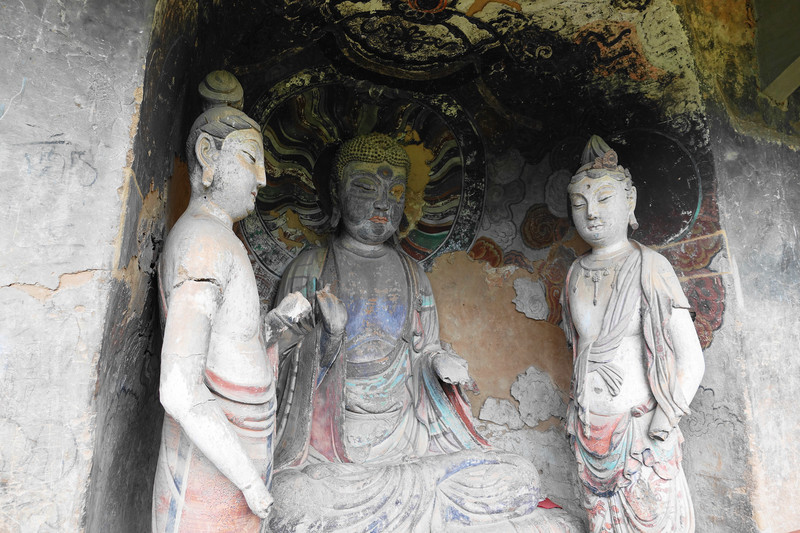

More is protected by the purse seine, and can only see the leopard in the eye:

On the contrary, the sightseeing trails are well arranged, contrasting with the green forest:

Looking up the entire trail is quite steep:

Looking back at Ruiying Temple at the exit before leaving, there was also a scene:
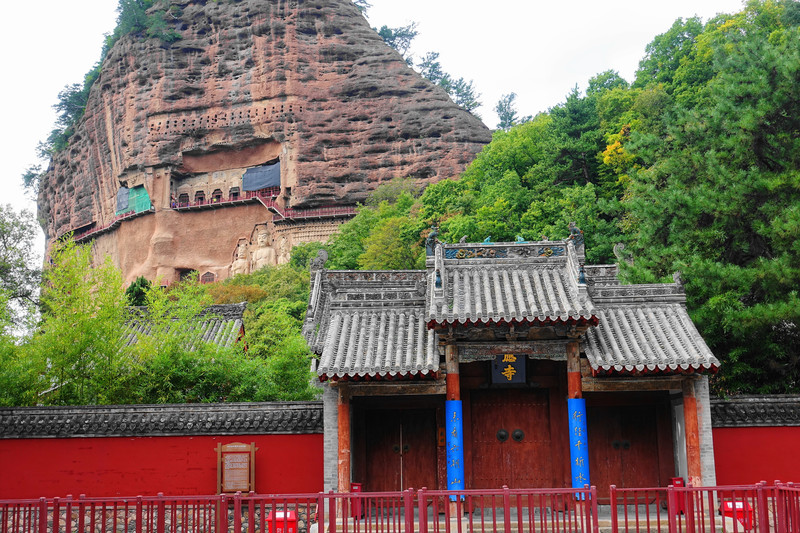

After checking in to the B & B, we had nothing to do. The owner recommended us to drive to a nearby botanical garden. As a result, we couldn't see any plants, only a small waterfall:
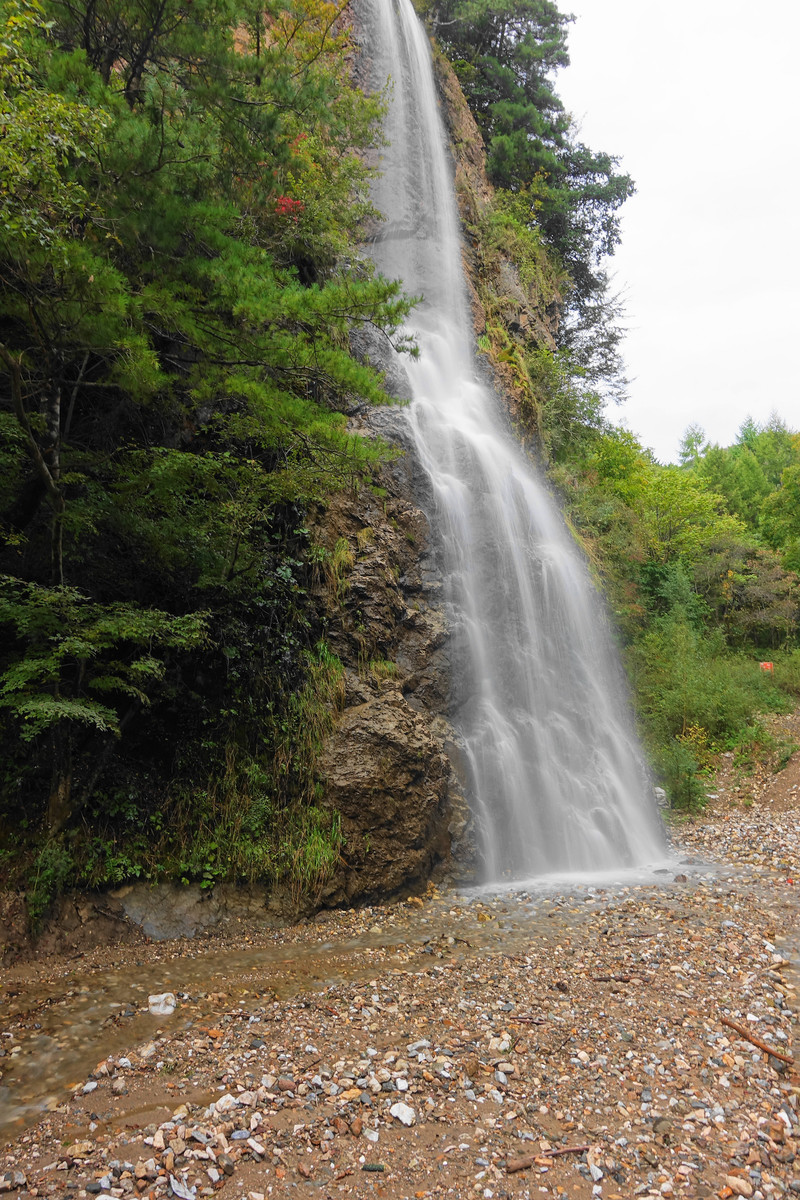
It's better than nothing:

Zhongwei Jinshahai Desert Theme Railway Hotel
After leaving Tianshui, we continued north to Zhongwei, but we did not follow the highway to Lanzhou. Instead, we took the national highway to Guyuan. In addition to the short distance (the time was actually similar), we also took the national highway because the scenery along the way is far better than the highway. If there is enough time, it will be a good choice.
There was a small incident in Guyuan accommodation. When we arrived at the hotel to check in, we were told that the hotel could not accept foreign guests. Since our daughter-in-law only held a Hong Kong and Macao Pass, she was among the "foreign guests" and could not check in. Fortunately, the front desk staff immediately provided assistance and introduced a nearby hotel that could accept foreign guests. When we left the hotel the next day, we found that the lighting in the lobby turned out to be a boat theme, which was quite unique:

While traveling north along the road, I discovered a phenomenon. The farther we go, the more complicated the procedures for checking in to a hotel with a Hong Kong and Macao Pass become, which further strengthens the need to quickly apply for a residence permit for my daughter-in-law. Otherwise, there may be a lot of accommodation trouble during the next year's trip around China.
After leaving Guyuan, we headed straight to Zhongwei. One of the reasons why we chose Zhongwei as a stopover was that we didn't want to arrive in Yinchuan too early, and I'm afraid that there was too much time to kill. Another reason was that we had seen a train hotel in Zhongwei in the past. I had just returned from Ejina from filming Populus euphratica forest, and I felt a pity that I couldn't enter it. This time, there was a second opportunity. Naturally, we couldn't miss it. The hotel was converted from an entire train. When we came to the hotel, we came first to see the big picture:

I specially took out a long-lost SLR to commemorate this characteristic hotel. The long car card shows the various rooms:

In contrast, is the hair color of the card machine much more gorgeous than the SLR?

But the SLR is more realistic:

Each card room has independent entrances and exits:
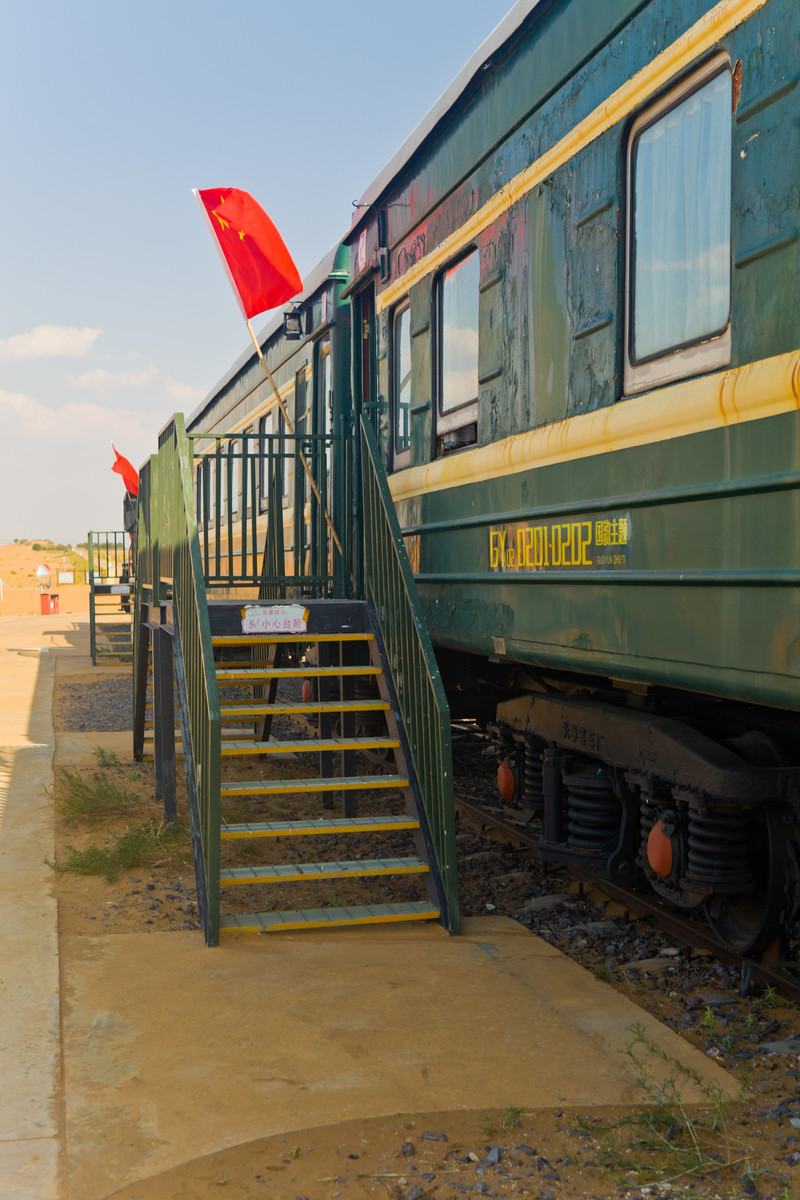
There are also many conveniences that are convenient for checking in:


In addition to rooms converted from trains, the hotel also has rooms built in the desert that look like yurts. In addition, some leisure facilities are provided. No wonder people can be seen everywhere taking photos with mobile phones, cameras, and SLRs:





The desert at sunset does have an indescribable desolation and beauty:



Compared with the accommodation in the Sahara Desert during last year's trip to Morocco, this place is superior in terms of comfort and convenience. On the other hand, it may be that the hotel was not built to take care of the laying of infrastructure facilities. Deep into the desert, the landscape is relatively limited, and it is impossible to fully understand the vastness of the desert. Although the accommodation conditions in the Sahara Desert are slightly inferior, the camp is deep into the desert, and the atmosphere of the desert can be better felt. Perhaps this is a compromise that cannot have the best of both worlds. It is probably difficult to achieve both travel comfort and pure natural scenery.
Qingtong Gorge Tower 108
After leaving Zhongwei, we continued on to Yinchuan. We got off the highway and visited a small attraction: Qingtong Gorge Tower 108:

This is a man-made attraction built on the edge of the Yellow River. There is no need to delve into whether it is a historical site. We can visit it because the fees are not high and the people are not too many. Although the scenic area uses Tower 108 as the main axis, the decoration is still more eye-catching than the temple next to it:

People rely on clothes, Buddhas rely on gold clothes, and thinking is believed:


Guan Yu was also invited:

In contrast, the protagonist seems more frugal:


The Yellow River rolled past in the distance:

Tourists are scarce and predators cannot survive:

In fact, the garden scenery here is very good:

On the way out of the scenic spot, I found a viewing platform for the Yellow River Water Conservancy Project:


Of course, the scale cannot be compared with the Three Gorges Dam:

Later, we ran to the edge of the Yellow River to kiss the mother river of the Chinese nation up close:

Zhenbeibao Beibu Yingcheng
After leaving Qingtong Gorge, we stayed in Yinchuan. For dinner, we naturally tasted Ningxia's famous hand-caught sheep. This was also a delicious food that I had longed for since returning from the trip to Ejina. Finally, I got my wish again in Yinchuan. The tiredness of more than ten days was swept away and I suddenly felt that the trip was worth it.
There was no talk all night. After breakfast in the morning, we headed for the first attraction: the North Cinema of Zhenbei Fort.

This attraction is famous for filming here by Stephen Chow's Journey to the West series. There is an endless stream of tourists. Tourists wearing Zixia Fairy costumes can be seen everywhere to check in. It is so lively.
This must be deja vu:
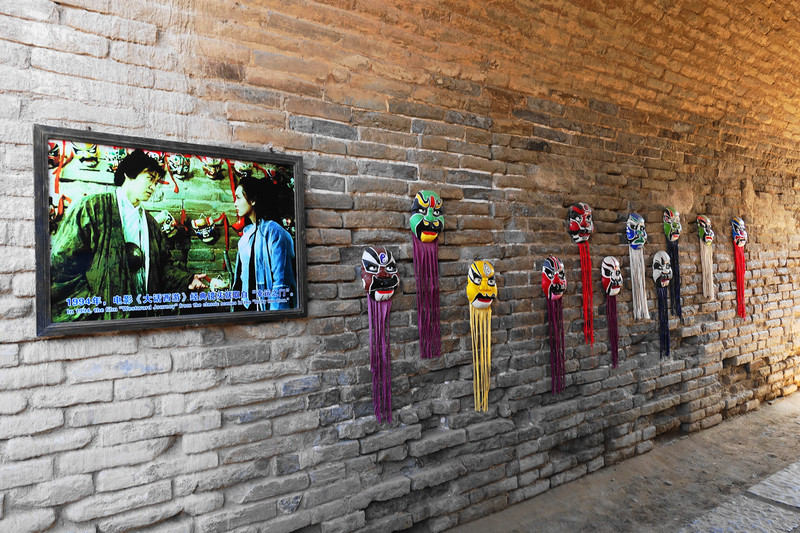
The classic scene probably needs no explanation:

Do you remember other scenes?





Longmen Inn was also filmed here?

xixia mausoleum
You Bi Cinema naturally visited the Xixia Mausoleum on the way, but to be honest, unless you are very interested in or researched the history of the Xixia Dynasty, the visibility of this attraction will probably be greatly reduced.
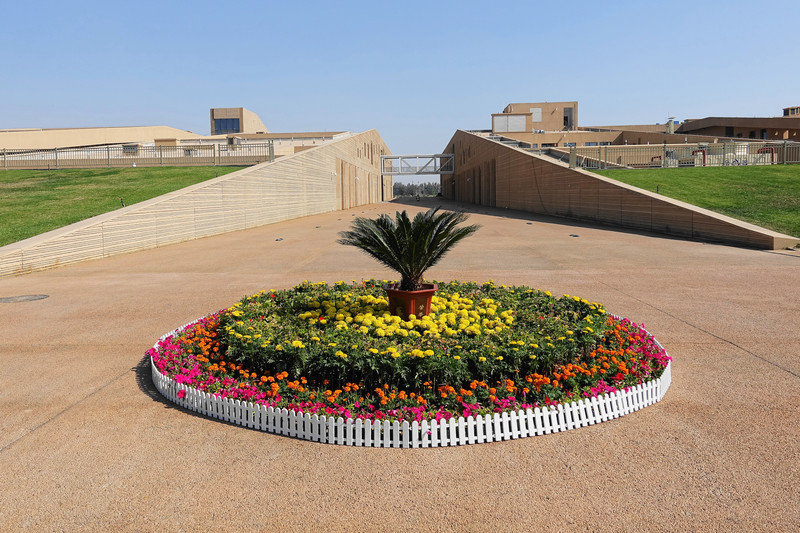
The entire Xixia Mausoleum is distributed on the vast plains. It is basically difficult to visit one by one on foot. You can only take a shuttle bus to visit one of the royal mausoleum sites:

However, since you cannot enter the inside of the tomb, visitors who have not done research on Western Xia culture may not be able to see anything from the appearance alone:

Maybe it would be more helpful to go to the Xixia Museum to do your homework first and then see the objects (unfortunately, we reversed the order):

Ningxia Sichuan Folk Park
I got up early the next day in Yinchuan and drove to the Shuidonggou tourist area. However, I didn't expect the scenic area to be closed for renovation, and I suddenly lost my budget. I checked the Internet and changed my route to visit Ningxia Sichuan Folk Garden.
After driving the car to the parking lot and stopping, I actually found that an SUV parked next to me also had a "Guangdong J" license plate. Then I heard a vernacular answer, which immediately warmed my heart. Although it is not considered to be an old friend in a foreign country, it is not easy to meet fellow countrymen in a foreign country in a vast sea of people. It is no problem to have a small exchange and exchange WeChat messages. It turned out that they had a total of two cars and also came for the Hero Club. They walked along the road and played while playing. At that time, some of the group members paid to visit the Folk Garden, while the rest of the group were resting and chatting in the parking lot. They didn't want to do it, so they had a chance encounter in a foreign country.
After a while, the group members who entered the venue came back from the tour and lamented that it was not worth it. Many places inside were closed for maintenance, which was not very impressive. Therefore, we also gave up buying tickets to enter the house and just took a few photos at the gate before heading home:




Alxa Heroes Association
This year seems to be the 14th Alxa Heroes Club, and its scale is said to be getting bigger and bigger. During this period, in addition to holding regular desert cross-country races, it is more of a carnival element, so the number of participants has increased with the year. When I came back, I learned that this year, there were more than 400,000 trains entering the venue. They were crowded into a venue built in the desert. The lively or crowded situation was half of the time.
Although we signed up with the Shanghai Brigade very early, we were unable to apply for insurance online due to problems with our documents (Hong Kong and Macao Pass). However, it is a necessary procedure to be able to drive the car into the venue of the Heroes Club. Otherwise, the car sticker cannot be obtained and the car cannot enter the venue. That is why we arrived at Bayanhot in Alxa Left Banner on September 30, went to the registration office early in the morning to apply for insurance, and successfully obtained car stickers, which was a relief.
After breakfast on the morning of November, I headed for the venue of the Alxa Heroes 'Association. On the way, I passed by a small salt lake and stopped to take a photo. Unexpectedly, after staying for more than ten minutes, I would have to pay the price of several times the time being crowded on the road. But that's for later. The entire salt lake area is not very large:

But appearing in the desert has a very strange feeling:


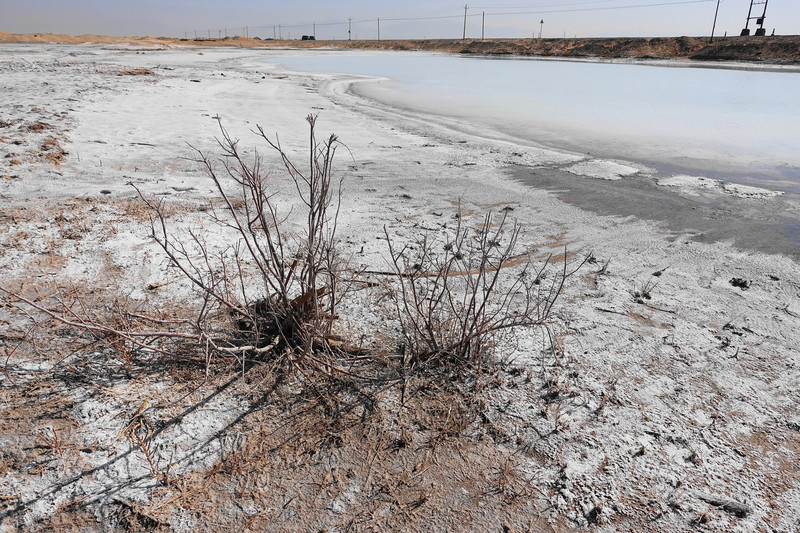
After leaving the Salt Lake, I began to realize that there were more vehicles on the road. When I arrived at the landmark of the conference, I couldn't park in the parking lot. I could only stop by the roadside to take a photo:

The parking lot at the gate of the desert highway is also hard to find:

Driving further, you reached the entrance of the main venue. Although cars with car stickers could use the member channel, traffic jams began less than two kilometers away from the security gate. It finally took three hours to pass the security check to enter the venue. We found the Shanghai Brigade's camp and set up a tent according to the instructions:

The advantages of putting a tent next to the car are not only easier to take equipment and items, but the most important thing is to use the car body as a wind barrier. Sand and sand blowing in the desert is quite severe. Having appropriate cover can not only ensure the safety of the tent, but also reduce the amount of sand entering the tent (it is basically inevitable that sand and sand blowing into the tent).
There was a counter-climax here, because although the Alxa Heroes Club was the destination of this trip, there was not much gain. The reason was that there was a peak of people/cars for the entire two days, and the venue was packed. Originally, he hoped to follow other campers to drive to the desert to play in the sand, but when the passages around were blocked by long queues of cars, the plan had to fall through.
The most effective means of transportation in the venue was still on two legs. In the evening, we wandered around and came to a small lake:
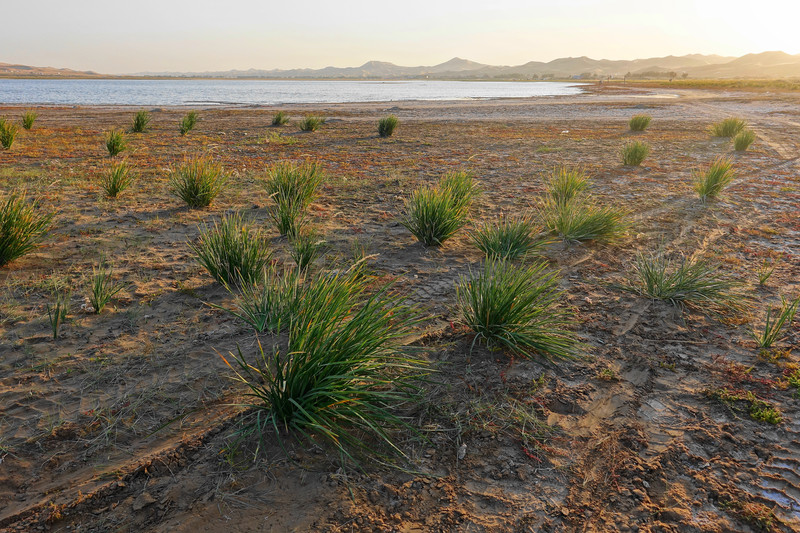
There are also people walking into the water to have fun:

As the sun sets, we are also on our way home. Just across the road from our camp, many yurts have been built to provide a local tycoon alternative to accommodation tents:

The afternoon of the next day was spent chatting with other campers in the big tent of the Shanghai brigade. In addition to hearing many touching stories, I also realized the hard work of doing things behind the scenes. From organizing participants to building brigade facilities on site, material supply, camp overall management, program arrangement, etc., it is all thankless work. I would like to pay special tribute to the behind-the-scenes heroes such as Brother Wolf and Dong Ge.
In addition to fireworks the next night:

Bonfire party:
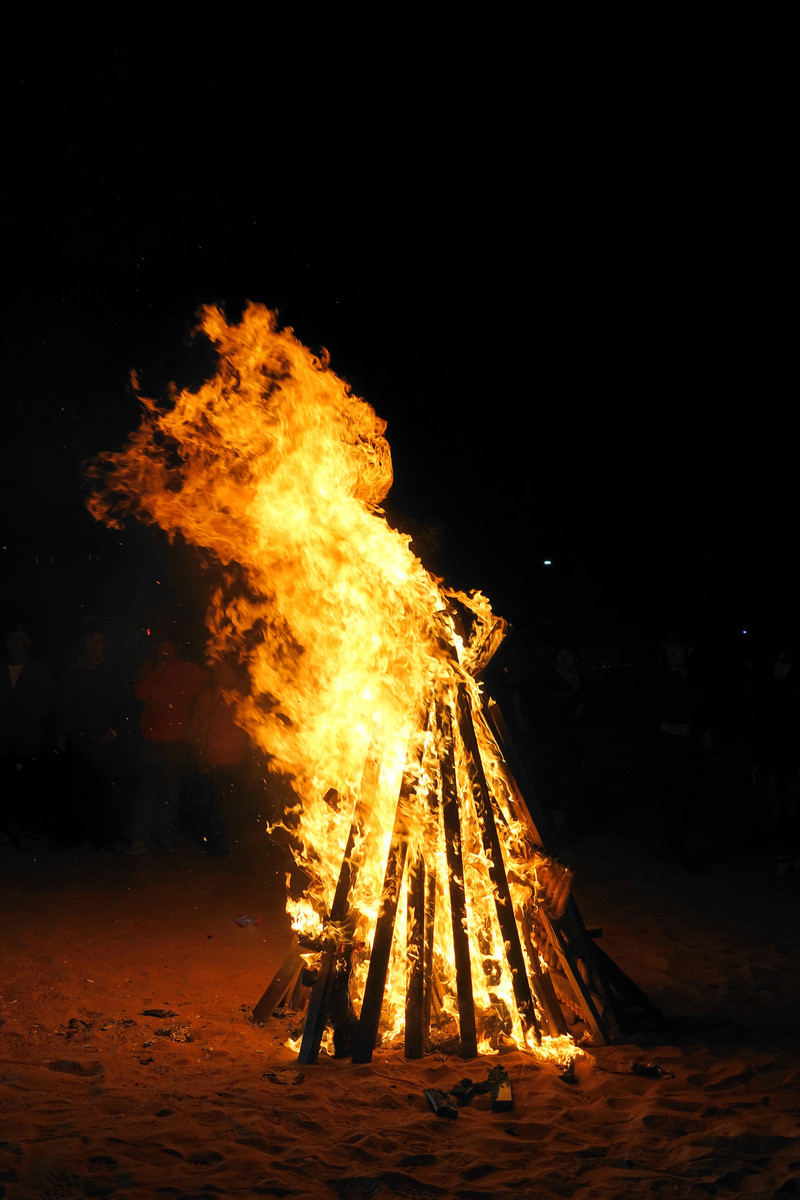
There are also aftershocks such as roasted whole sheep:

Since we needed to rush back to our hometown to attend the anniversary ancestral ceremony, we broke camp early the third day and set out to bid farewell to this colorful heroes 'party. Although he failed to complete the sand play plan, he also successfully tested the car's four-wheel drive performance. It was easy to drive in the desert camp, which was one of them. On the other hand, many two-wheel-drive cars drove into the camp from the paved road of the conference. Once they stopped, they could no longer be driven. The driving wheels plunged directly into the sand, helplessly waiting for other four-wheel-drive cars to come and rescue.
When leaving, the number of vehicles on the road has been greatly reduced:

Officially bid farewell to the Tengger Desert on the morning of the rising sun:

waterwheel Expo Park
After leaving Alxa Left Banner, we began our southward route. After spending the night in Yinchuan, we arrived in Lanzhou on October 4. Since we only had half a day, we chose to visit the Waterwheel Expo Park in the city.
The Waterwheel Expo Park is built on the edge of the Yellow River. It is basically a riverside park and is open for free. During the Golden Week period, there were no crowds in the streets, let alone crowded with each other. It was quite surprising:

The garden scenery is also beautiful:



There are also sheepskin rafts crossing the Yellow River in the park:

But tourists seem to rely more on modern technology to travel the Yellow River:

However, after visiting, I found that the biggest gain was to personally experience the wisdom of the ancients and use the river water to drive the waterwheel:

Then pour water into the water diversion channel through a waterwheel:


Water is transported to places where irrigation is needed through water channels and at the same time provides inexhaustible power:

Our ancestors knew how to use zero-pollution renewable energy long before our belated awareness of environmental protection. But today, scientists are racking their brains and still fail to get rid of their dependence on fossil energy. Is this a retrogression of technology? Or is mankind's endless thirst for enjoyment far beyond the pace of technology? This became the question that lingered in my mind when I left Waterwheel Expo Park.
Wushan Shuilian Cave
There was nothing to talk about the night. After checking out in Lanzhou the next day, I continued my journey south and home towards Guangyuan. In response to the introduction of grottoes to see, I stopped at a scenic spot called Wushan Shuilian Cave:

After entering the ticket gate, you can pay for a sightseeing bus to reach the destination. The most "impressive" scenery of the entire scenic area is in front of you:

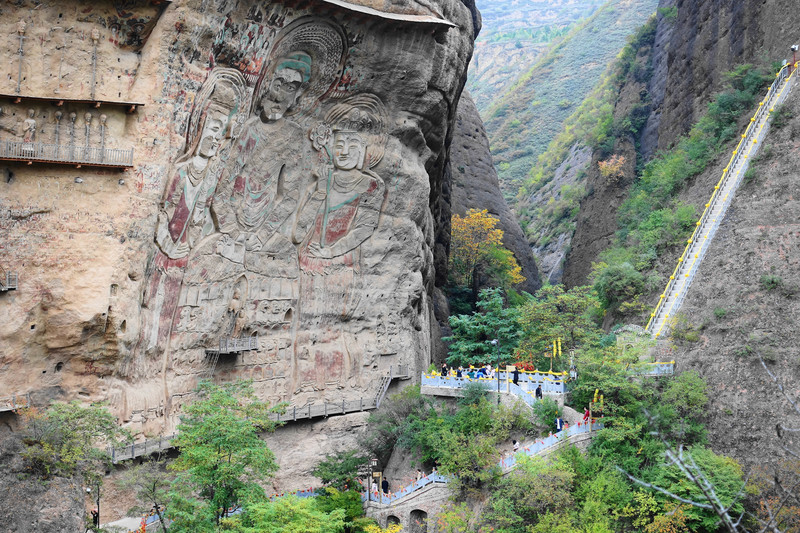
If the camera has a slight zoom (about 70mm-100mm), you probably can see clearly without running the stairs:

Seeing that we had plenty of time, we walked up the steps to the mountain to see what the Shuilian Cave was like, but the result was: We were deceived!
The so-called Shuilian Cave is just a semi-natural cave with an artificial water storage pool. The focus is actually the temple group built along the mountain wall:

Looking down from the mountain is another perspective:

After seeing the Water Curtain Cave without water flow, it was too early to visit the remaining attraction: Thousand Buddha Cave. It was reported that this was the location of the grottoes, and I was lucky that maybe a good show would come, but the result was a second ambush.
In addition to the damage far greater than that of the Maijishan Grottoes, the scale is completely lost. It is like this at a glance:

Several damaged mud statues on the mountain wall:

Anyway, it is difficult to get along with the grottoes:

In fact, the entire scenic spot basically focuses on praying for the gods. Other landscapes and relics are just floating clouds. In addition to incense, hanging wishes and blessings on trees are the main selling points here:

Guizhou Province Museum
After leaving the Wushan Shuilian Cave Scenic Area, we continued our journey back south and arrived in Chongqing on the last day of the National Day holiday. We took a short rest and arrived in Guizhou on October 8. After a few days of free travel, I returned to the charge at high speed, and suddenly I felt that the toll was expensive! This is really similar to the principle that it is easy to turn from frugality to extravagance, and it is difficult to turn from extravagance to frugality.
Before checking into the hotel we booked in Guiyang, we visited the Guizhou Province Museum. In fact, during this trip, we often visited the museums in the city where we stayed, but they were generally small in size and did not take photos. The above were omitted one by one.
The Guizhou Province Museum is located in the provincial capital of Guiyang City. It is the largest museum seen during this trip. Just by looking at the exclusive basement parking lot and parking it for free, you can tell one or two.
The entrance of the gate is still full of the atmosphere of the 70th National Day anniversary:

Echoing the contemporary building opposite:

The museum has a wide space and a rich collection. In particular, the introduction of ethnic minorities is particularly thoughtful and has benefited a lot. Other printing plates such as Ming Dynasty banknotes:

Murals (should be imitation):

and other collections:

They are all interesting:
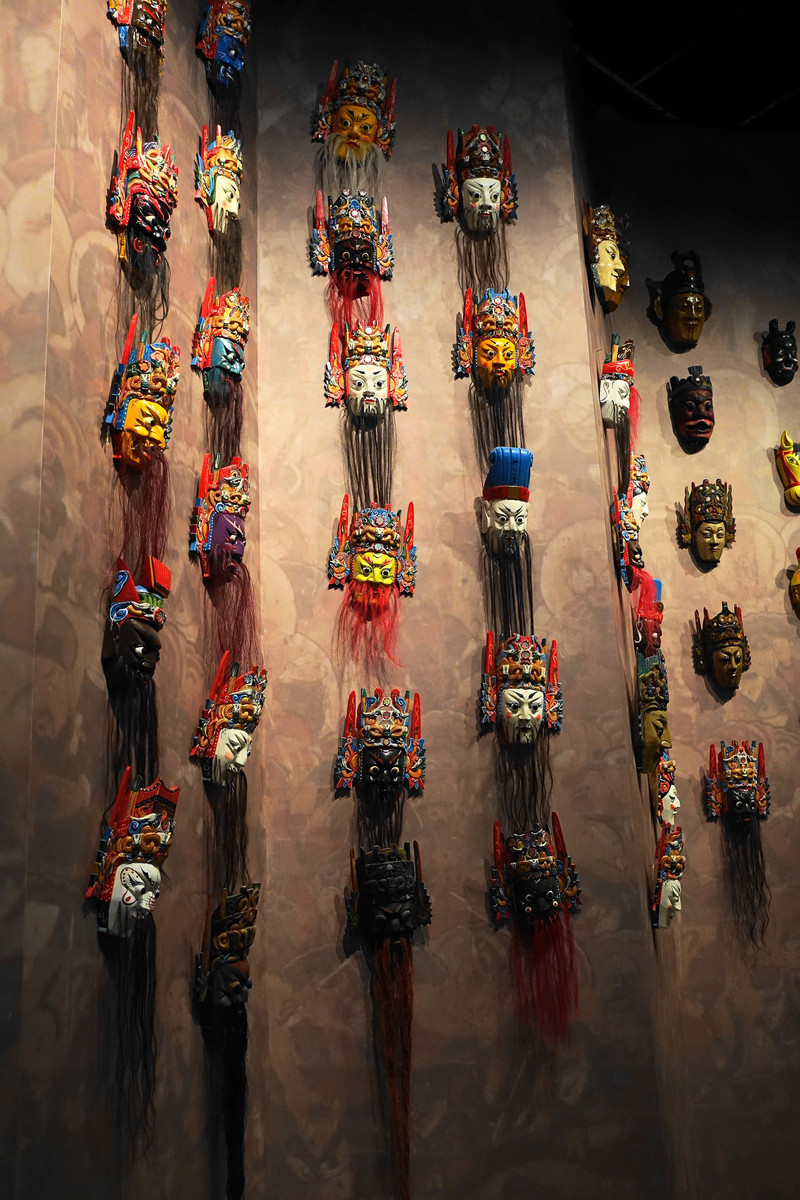

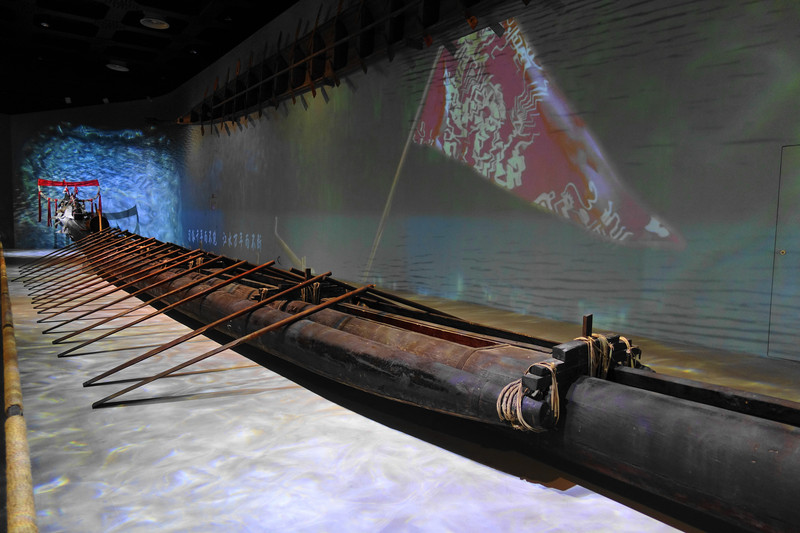
However, there is no lack of modern elements in nostalgia:

Yangshuo West Street
Yangshuo is the last stop on the way home. I also stopped in Yangshuo during a four-province tour, but at that time I stayed in the Shili Gallery Scenic Area and concentrated on touring the scenery of the Yulong River. This time, I passed through Yangshuo again, chose to stay in a hotel next to West Street, and revisited West Street, which I hadn't returned for many years. It was refreshing.
There is a swimming pool built on the platform of the hotel where you stay, which is eye-catching:
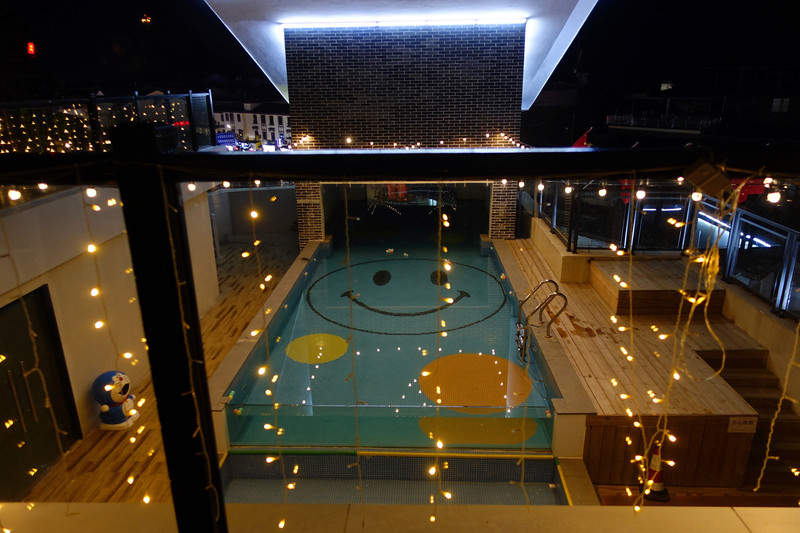
The scenery of West Street in the evening is also very charming:
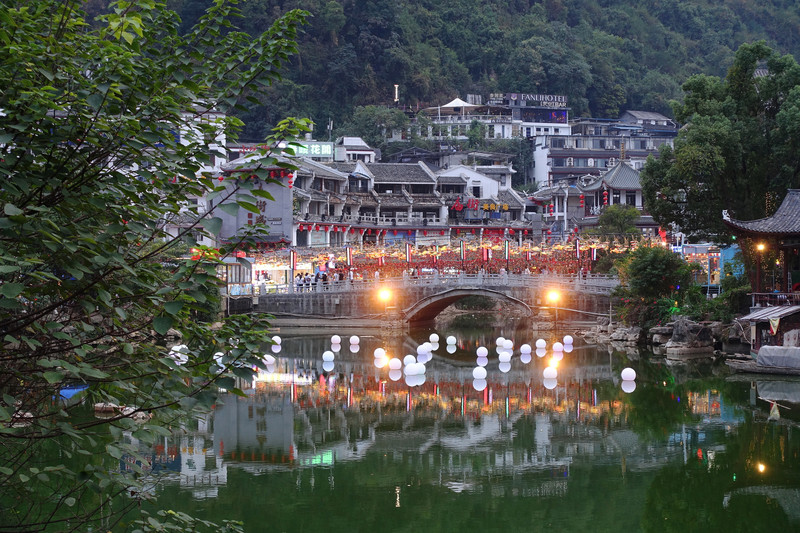

There are many restaurants, and the most eye-catching ones are Yangshuo's famous dish beer fish:

The Western restaurants and bars on the street are also mostly unknown:

Compared with the impression of many years ago, not only has the environment improved by leaps and bounds, but the choices are even more dizzying. It has a sense of petty bourgeoisie. It is no wonder that many friends will linger after coming to Yangshuo.
a later story
Miles at departure:

Miles at the end of trip:

The total distance is 7,377 kilometers.
This journey, which lasted nearly a month and more than 7,000 kilometers, provided very valuable experience for next year's trip around China. Whether it was clothing, food, housing, and transportation, you can experience changes from south to north, which is conducive to adapting to the coming year. The long journey from south to north and east to west provides a good preview.
In addition, after returning to summarize the itinerary, I also have several more profound experiences:
1)After picking up the long-lost SLR again, compared it with the card machine that has been switched to in recent years, in addition to the obvious difference in weight, when I came back, I found that the photos taken by the two were significantly different. Compared with the photos taken by the C-SLR, the hair color of the photos taken by the S-SLR is obviously brighter. The advantage is that they attract attention, but they lack the sense of reality. It'S just that they have been used to watching them in the past few years, so they don't care until compared with the photos taken by the SLR. I was surprised to realize the difference between the two. I recall that when I first learned photography, I insisted on taking pictures of the scene, but today's mobile phones and even card machines all have built-in automatic decoration functions such as beauty pictures, and the "pictures" taken are even more eye-catching than those seen on the scene. Users (including themselves) unknowingly became intoxicated with the beautiful "productions" and forgot that the photos were records of the "live scenes" of the scene at that time. The conclusion of the humble house inscription: "A gentleman must learn carefully and start carefully" suddenly sounded in his mind.
2)The scenery is good on the road, but it is difficult to achieve on high speed. The reason is that highways are enclosed road systems and are often built on viaducts. Unless you are sitting on the upper floor of a tourist bus, it is difficult for drivers or passengers to get a good view at the height of an ordinary car or SUV. Enjoy the scenery along the road. Even if you encounter charming scenery, you cannot stop at will on the highway to enjoy or take photos (parking in the emergency lane to take photos is not only a violation, but also a gamble with your own lives and those of other road users. It is absolutely stupid). If you want to enjoy the scenery on the road, it seems that there are more opportunities to take national or provincial roads. During this trip, I experienced it firsthand on the way to Guyuan. Not only is the scenery unique, there are occasionally residents on both sides of the road selling local specialties or fruits, which is very unique.
3)When going to the toilet one morning during the Heroes Club, I found a single line at the end of the passage in the middle of the two rows of toilet compartments.(single queue), rather than coaxing each other to try their luck in each toilet, such a simple scene deeply moved me. Especially when the country celebrated its 70th anniversary, the people silently moved towards highly civilized norms with actions. This is an improvement of the country's soft power, making people feel that the Chinese Dream is no longer a dream, but a historical process that is becoming a reality step by step.
Previous Article:#2020 National Day #Guilin/Lijiang Yangshuo/Nanning/Detian Waterfall/Tongling Canyon/Beihai Weizhou Island 9th
Next Article:One-day tour of Yangshuo's essence
